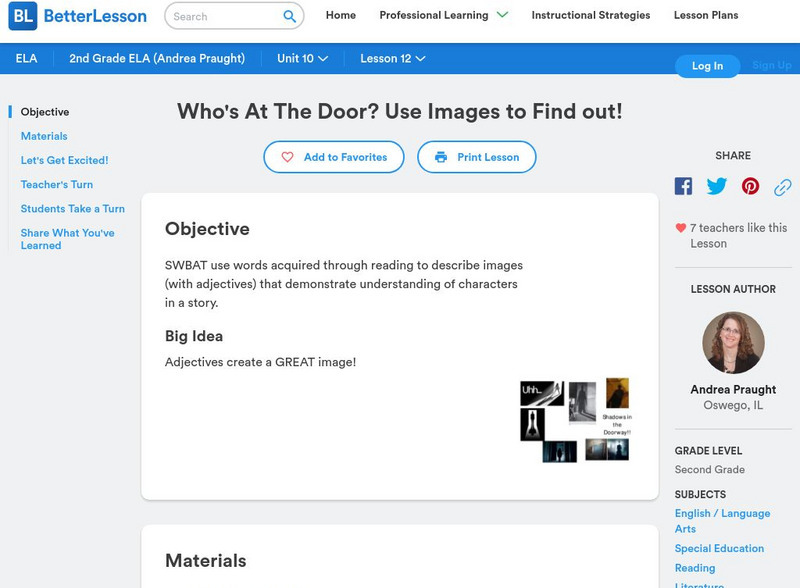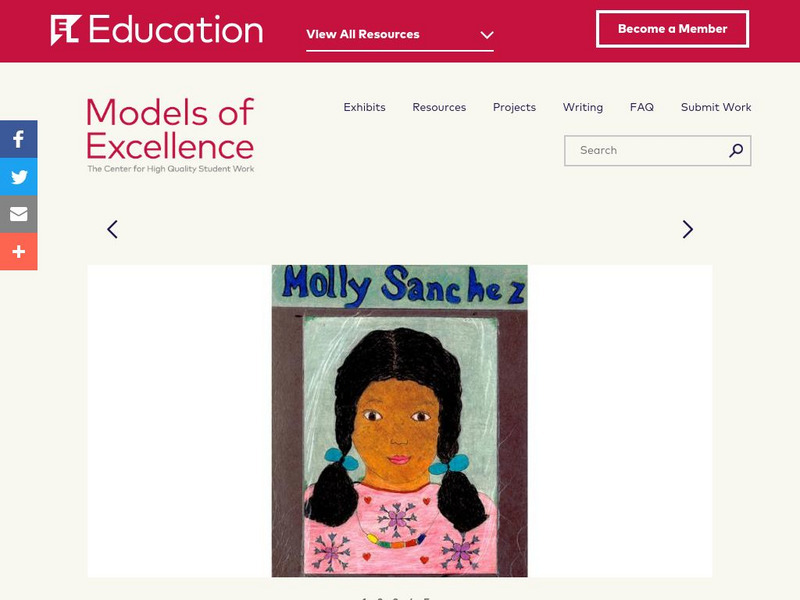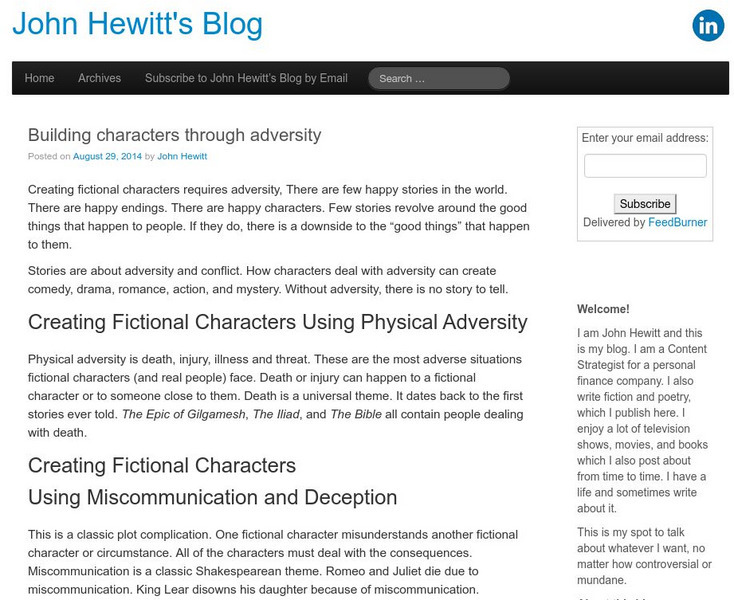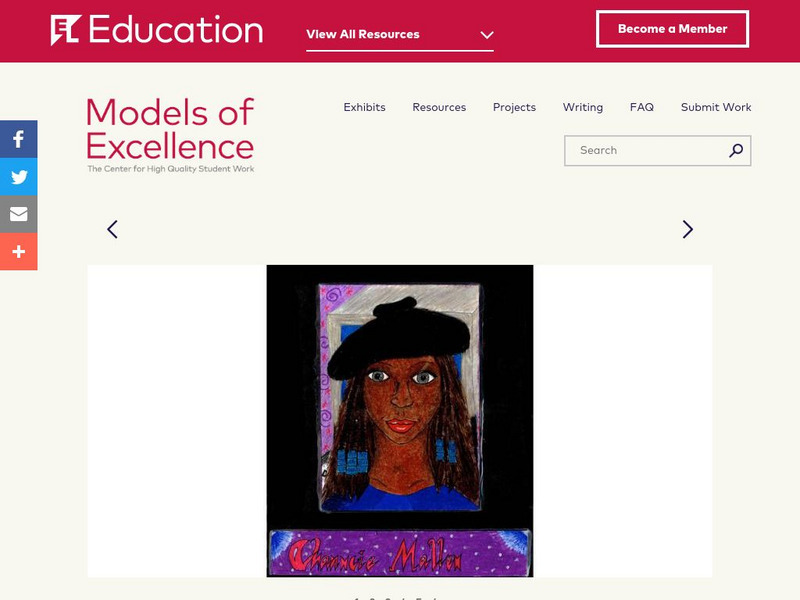ClassFlow
Class Flow: Golding and Lord of the Flies
[Free Registration/Login Required] William Golding's life comes alive in this informative flipchart discussing his early life and writing career.
Better Lesson
Better Lesson: Who's at the Door? Use Images to Find Out!
Students will use words acquired through reading to describe images (with adjectives) that demonstrate an understanding of characters in a story. The teacher will read Miss Nelson is Back which has great descriptors and will hold a class...
EL Education
El Education: Molly Sanchez
Students learn about Deaf Culture through presentations, cultural experts, fieldwork, and reading fiction and non-fiction books. Then students use the information they have learned to create a realistic character and write a character...
Sophia Learning
Sophia: Indirect vs. Direct Characterization
This lesson introduces indirect (learn about the characters through speech, thoughts, actions, physical description, other character's feelings) and direct characterization (author tells the reader about the character) in fiction...
Other
Building Characters With Adversity
Extensive and very interesting article advising the reader on how to develop characters through adversity.
Caro Clarke
Caro Clarke: What Is Conflict?
This is the sixth in a series of articles designed to help the new writer with their novel. This article focuses on conflict and how it effects the characters and the plot of the story. W.11-12.3a Narratives
Caro Clarke
Not Stopping the Reader: How to Avoid Stumbling Blocks
This is the eighth article in a series that focuses on helping the new novel author. This article looks at how the author can avoid creating stumbling blocks that disrupt the flow of the novel.
Caro Clarke
Explaining Too Much: Why More Is Less
This is the eleventh article in a series that is designed to help the new novel author. This article focuses on how to eliminate needless information in your novel. The key is to not explain too much about the action.
Caro Clarke
A, B, and C Characters
This is the ninth article in a series that focuses on helping the new novel author. This article focuses on what the author calls "A, B, and C Characters," used to describe the different levels of characters.
Other
Fiction Factor: The Importance of Setting
An interesting article concerning the importance of setting to any piece of fiction. Gives good information about how setting affects characters and "world-building."
PBS
Pbs: American Masters: Lesson 2: Truman Capote: Other Voices, Other Rooms
This lesson plan is based on the PBS episode of American Masters about Truman Capote. Students will read and analyze how Truman Capote develops characters as they record their findings on worksheets included with this lesson. Then...
EL Education
El Education: Chauncie Mallen
A 5th/6th grade student in Shutesbury, Massachusetts, created this character file (CF) as part of a Learning expedition on local scientists. As part of the expedition, students surveyed all of the fields that are considered the hard...











